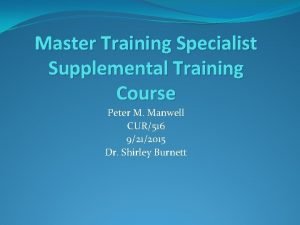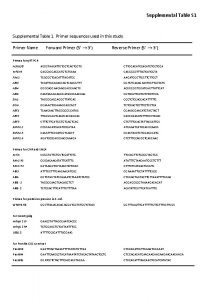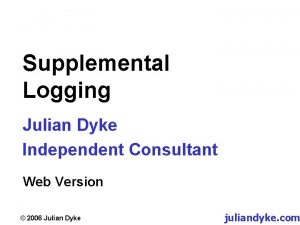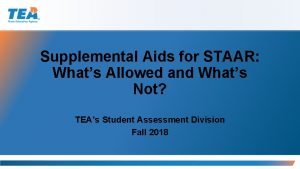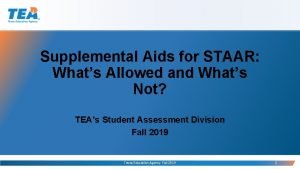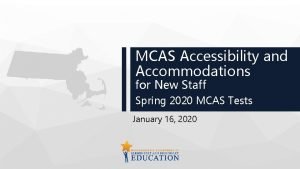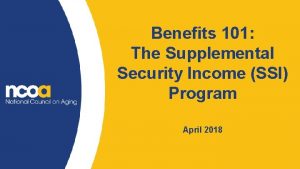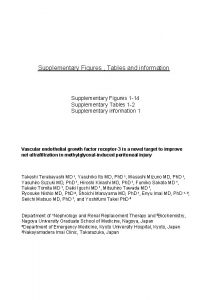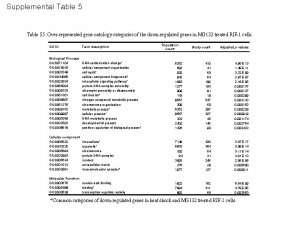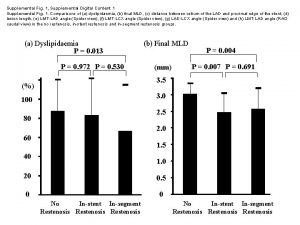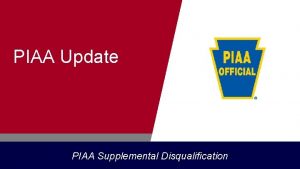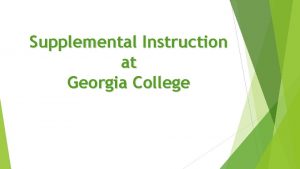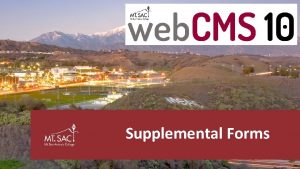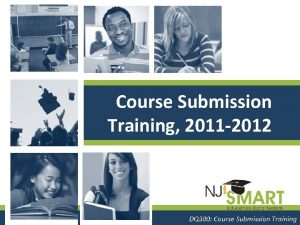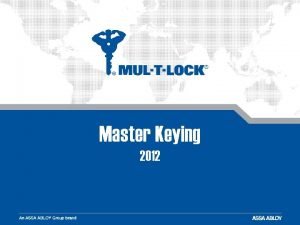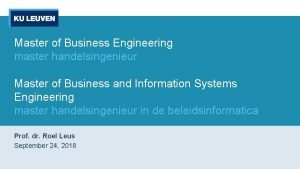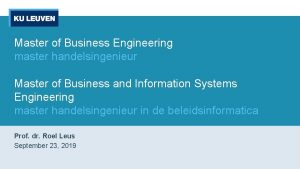Master Training Specialist Supplemental Training Course Peter M
















- Slides: 16

Master Training Specialist Supplemental Training Course Peter M. Manwell CUR/516 9/21/2015 Dr. Shirley Burnett

Introduction �Interview with Learning Site Lead. �Needs Analysis �Response to interview questions.

Phase 1 - Planning �Course Description �Target Audience �Delivery Modality �Length of Course �Course Goals

Course Description Purpose: to enhance the mentor-training qualification strategy currently used in the designation of US Navy Master Training Specialists at Center for Personal and Professional Development, Learning Site Dam Neck, VA

Target Audience �Qualified Master Training Specialists at CPPD Learning Site Dam Neck.

Delivery Modality and Length of Course Modality Instructor-led classroom and mentorfacilitated activities. Course Length Six weeks.

Course Goals For MTS designated staff to effectively manager the: Instructor Evaluation Program, In-Service Training Program, and MTS Program.

Phase II – Objectives Training Methods Instructional Strategies and Activities Instructional Technologies and Resources Objectives with Corresponding Goals

Phase III – Implementation Plan �Course Length �Implementation personnel �Resources needed �Implementation details �Quizzes, knowledge test and performance test

Implementation Schedule Events/Steps Projected Start Projected Completion Needs Assessment 9/21/2015 10/2/2015 Plan Phase 10/5/2015 10/16/2015 Analyze Phase 10/19/2015 10/30/2015 Design Phase 11/2/2015 11/13/2015 Develop Phase 11/16/2015 12/18/2015 Implement Phase 1/4/2016 2/26/2015 Evaluate Phase 6/6/2016 7/29/2016 Maintain Phase 8/1/2016 Ongoing

Phase IV - Evaluation Plan �Formative evaluation �Performed throughout development �Summative evaluation �Performed at the end of Implementation Phase and on-going

Formative Evaluation �Smith and Ragan Evaluation Model (Smith and Ragan, 2004) Design Reviews � Expert Reviews � Learner Validation � On-Going Evaluation �

Summative Evaluation �Adoption of Kirkpatrick’s Four Levels of Evaluation Model (Kirkpatrick, 1994) Level 1 – Reaction � Level 2 – Learning � Level 3 – Transfer � Level 4 – Results � Reaction Results Learning Transfer

Maintain �Response to Evaluation Phan data �Instructors submit interim change recommendations �Developer includes response to data and interim change recommendations in future changes or revisions to the course Analyze Maintain Implement Design Develop

Conclusion �Needs Analysis Interview �Development Description �Phase I – Planning �Phase II – Objectives �Phase III – Implementation �Phase IV – Evaluation �Phase V – Maintain �Final Recommendation

References � Brown, A. , & Green, T. D. (2011). The Essentials of Instructional Design: Connecting fundamental principles with process and practice (2 nd ed. ). Boston, MA: Allyn and Bacon. � Hodell, C. (2011). ISD From the Ground Up: No-nonsense approach to instructional design (3 rd ed. ). Alexandria, VA: ASTD Press. � Wlodkowski, R. J. (2010). Teaching Intensive and Accelerated Courses: instruction that motivates learning. San Francisco, CA: Wiley. � Smith, P. L. & Ragan, T. J. (2004). Instructional design, 2 nd edition. Hoboken, NJ: John Wiley & Sons. � Kirkpatrick, D. L. (1994). Evaluating training programs: The four levels San Francisco: Berrett-Koehler.
 Master training specialist certification
Master training specialist certification Supplemental online coursework
Supplemental online coursework Tobacco treatment specialist training
Tobacco treatment specialist training One brick t junction in english bond
One brick t junction in english bond Course number and title
Course number and title Course interne moyenne externe
Course interne moyenne externe Supplemental table
Supplemental table Oracle check supplemental logging enabled
Oracle check supplemental logging enabled Tea blank graphic organizers
Tea blank graphic organizers Math supplemental aids
Math supplemental aids Math supplemental aids
Math supplemental aids Mcas supplemental reference sheet
Mcas supplemental reference sheet Supplemental security income (ssi)
Supplemental security income (ssi) School of nursing ucla
School of nursing ucla Ubc nursing courses
Ubc nursing courses Supplementary figures
Supplementary figures Supplemental table
Supplemental table
